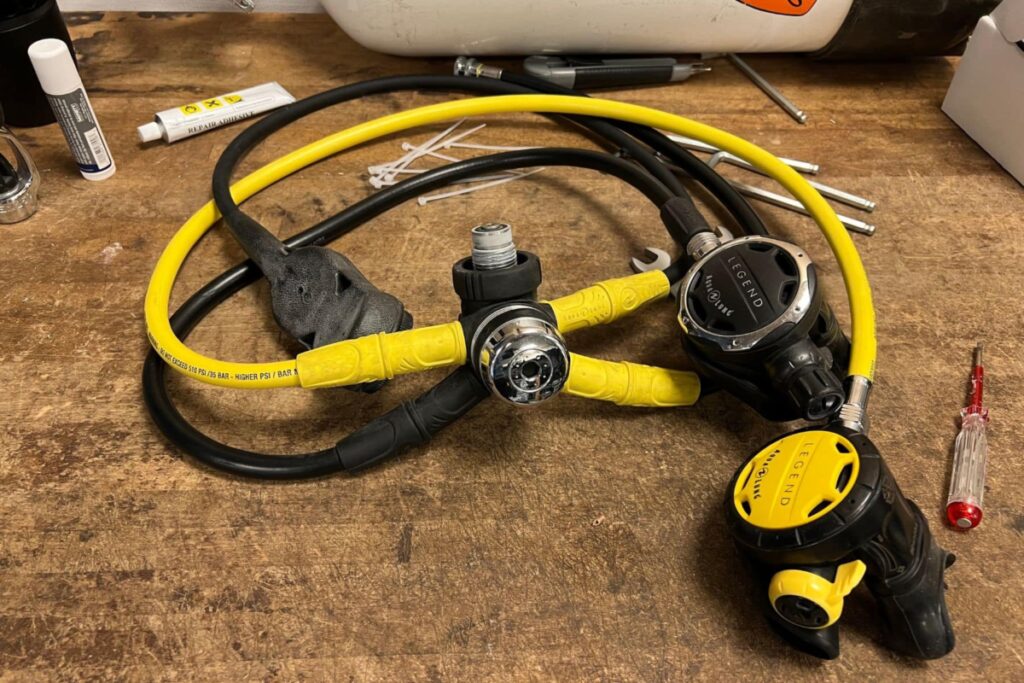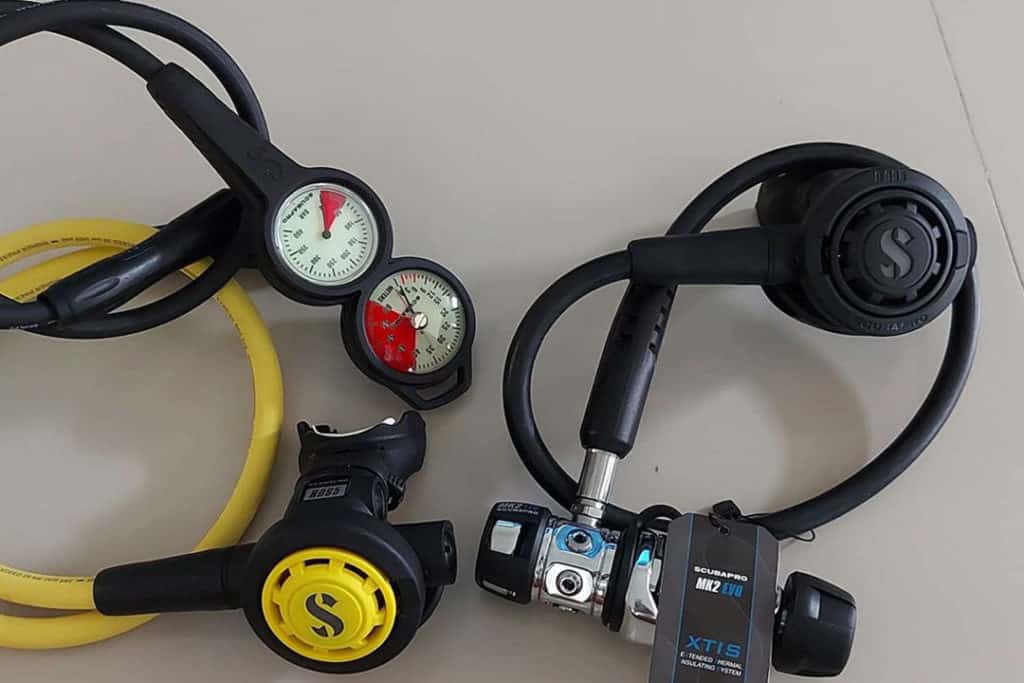
As a scuba diver, you’re responsible for assembling your own equipment before each dive. This may seem like a complicated process, but it’s actually not very difficult once you get the hang of it. It helps if you have an experienced scuba instructor who can show you how to assemble your gear step-by-step. However, if you’re new to diving or just want a refresher on how to assemble scuba regulators then please read on:
1. Prepare for inspection
Inspect the regulator for any damage. If there is damage to the regulator, you should not use it until you have repaired or replaced it.
You should also clean and dry your regulator before inspecting it. This will help identify problems more easily and reduce your risk of infection from bacteria growth.
2. Connect the first stage to the cylinder valve

The first stage is the bottom half of your scuba regulator. It attaches to the cylinder valve and delivers air to you when you breathe in, and then opens up to allow water into the second stage if you’re underwater. To connect this part to your cylinder valve, simply screw it on by hand until it’s tight enough that no more air can escape.
Once this is done, take a look at what’s happening inside your first stage. You should see two large hoses—one fitting into another—and an O-ring between them (this is what helps keep water out). If everything looks good here, move on!
3. Connect the second stage to the hose
Once you’ve connected the first stage to the hose, it’s time to connect the second stage.
To connect a second-stage regulator onto your dive hose, use a wrench and turn it clockwise until it is tight. It should be very difficult to turn this nut by hand; if you can easily unscrew it by hand, then you may need to tighten your regulator again. You needn’t worry about this being too hard—the reason we tell you not to use pliers or any other tool is because those tools can damage easily-damaged parts of your regulator.
Connecting both stages and making sure they are tight will ensure that your BCD keeps balanced air pressure throughout its lifetime, which will help keep your scuba gear working for longer and extend its life (and save money).
4. Lubricate the O-rings on both the first and second stages
There are two O-rings on the first stage of your regulator. The first one is at the hose port, and the second is at the depth adjustment knob. Lubricate both O-rings with Vaseline or another lubricant before use and make sure to replace them if they become damaged.
5. Inflate the BCD (buoyancy control device).
- Inflate the BCD. Your BC (buoyancy control) device is inflated by pulling on a rubber hose connected to a CO2 cylinder on your back, which pushes air into an inflatable bladder inside your jacket. If you have never worn one before, there are two ways to achieve this:
The first method involves blowing into the mouthpiece until it fully inflates. The second involves pulling on a hinged lever that opens up the valve, causing it to inflate automatically once in the water.
- Ensure you are properly weighted and balanced while in water. Ensure that all excess air has been released from your BCD so that it is as close as possible to being fully submerged underwater when you’re on land; this will ensure proper buoyancy once submerged in water (and no chafing). Make sure everything fits comfortably and feels right before leaving home so that any fine-tuning can be done at home and not underwater where such adjustments might cause problems or panic among those diving with you!
6. Close off a demand valve by placing your palm over the top of it.
- Close off a demand valve by placing your palm over the top of it.
- Breathe in and inflate your BCD by pulling on the inflator cord above your left shoulder. You can practice this in shallow water before you put on your mask so that you are familiar with how to do it correctly.
- Repeat on the other side.
7. Breathe from one demand valve, then the other.
- Breathe from one demand valve, then the other.
This is a quick check to see if both valves are working and there are no leaks. The regulator should be assembled correctly, with all parts seated properly in place. If you have a defective regulator or some other problem with your scuba equipment, this test will reveal it immediately!
8. Scuba diving can be dangerous but you’ll be prepared with a proper understanding of how to put together your gear.
Scuba diving can be dangerous if you don’t know what you’re doing. You’ll need a proper understanding of how to put together your gear and inspect it before each dive, as well as how to use it properly.
Conclusion
In conclusion, scuba diving can be a fun and exciting way to explore the world. However, it’s important to understand how your equipment works before taking off into the deep blue sea.
